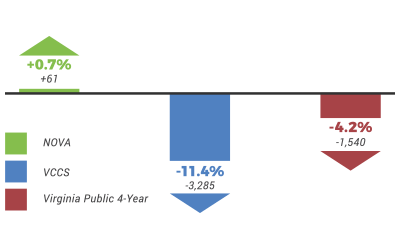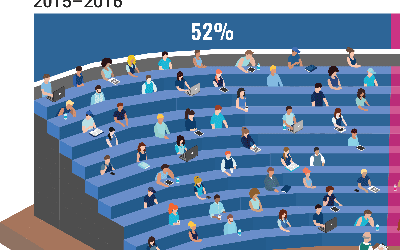Archive
Fall-to-Fall Retention | Vol. 04, Iss. 02
Fall-to-Fall Retention in the Era of Covid-19 Why Measure Fall-to-Fall College Retention? Retention from the first year of college to the second year is an important indicator of student success. The College Board’s recent research on student retention in the era of...
First-Time in College Students | Vol. 04, Iss. 01
FIRST-TIME IN COLLEGE STUDENT ENROLLMENT CHANGES IN ENROLLMENT Researchers have identified population decline, employment opportunities, and competition from four-year institutions as factors that contributed to a nationwide decrease in enrollment of first-time in...
Achievement Gaps | Vol. 03, Iss. 02
A Commitment to Equity Helping Every Student Succeed The term “achievement gap” refers to “any significant and persistent disparity in academic performance or educational attainment between different groups of students.”1 Community colleges nationwide serve a diverse...
Paying for College | Vol. 02, Iss. 05
The Challenge of College Tuition The Impact of Finances on Enrollment A large number of community college students come from low-income backgrounds, and many others are older and financially independent. As a result, community college students will often enter college...
Non-Returning Students | Vol. 02, Iss. 04
The Non-Returning Student Experience Why Students Leave College Early A non-returning student is a student who chooses not to re-enroll for another semester, despite not graduating and/or transferring. Many non-returning students make substantial progress toward their...
Part-Time Students | Vol. 02, Iss. 03
The Part-Time Student Experience Maintaining Momentum from Enrollment to Graduation A part-time student is a student who enrolls in fewer than twelve credit hours in a single academic term. Many of these students will only enroll in one or two courses each semester.1...







